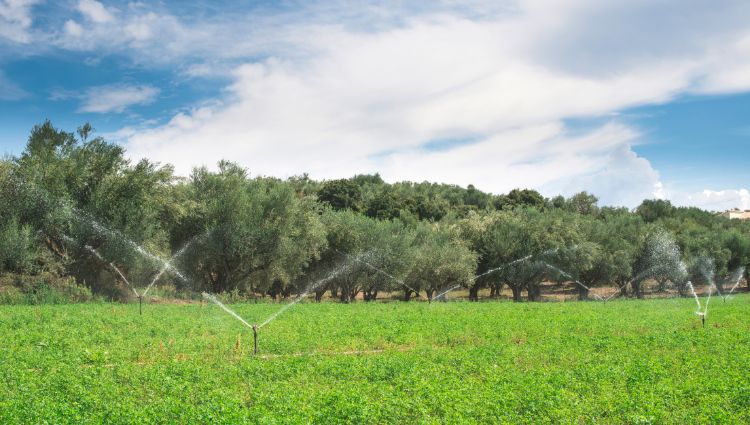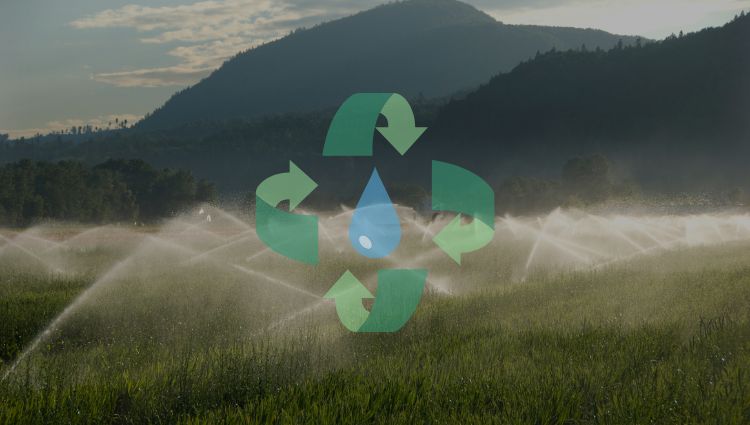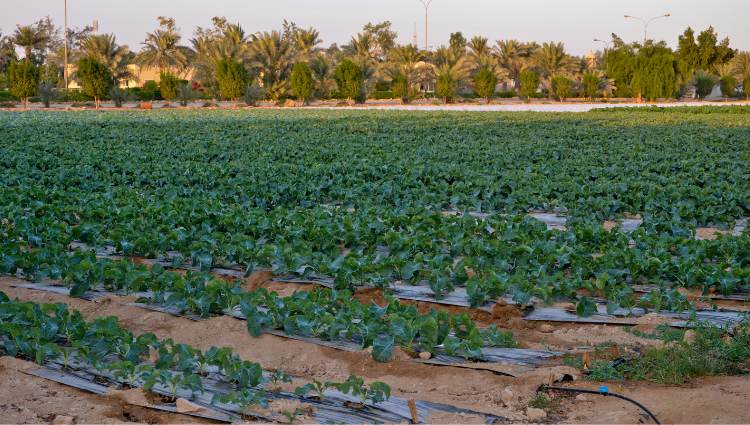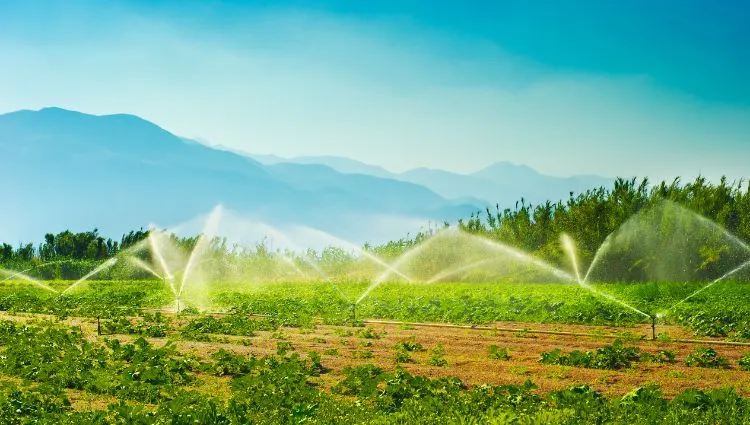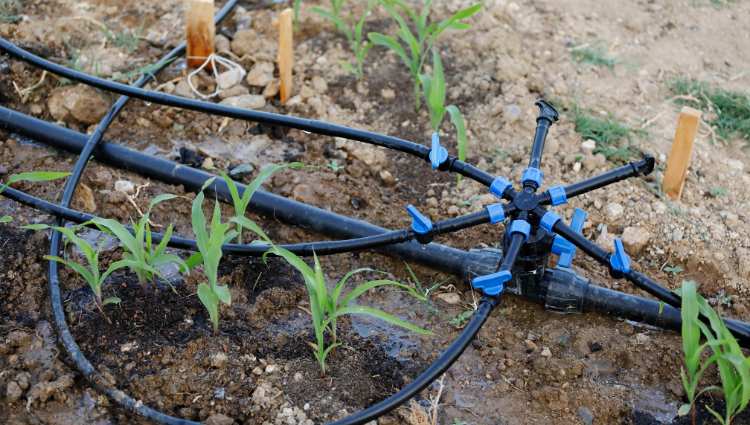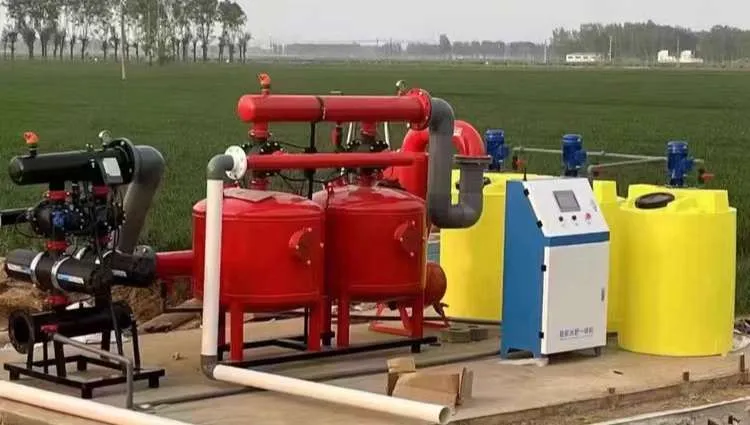Inhaltsverzeichnis
Einführung
Whether or not we believe that life today is safe and prosperous, we have to admit that we still face many problems, such as shortages and unequal distribution of food and water resources, unstable climate change, und so weiter. These issues pose certain challenges and threats to our living environment. But the good news is that our science and technology are constantly advancing, and our level of understanding and ability to solve problems are continuously improving. No matter what problems we encounter, we can always find solutions.
Zum Beispiel, in response to the issues mentioned in the previous paragraph, we now have many excellent agricultural technologies (irrigation technologies) to address them. This post will explain what an irrigation system is. It will cover its functions, Typen, characteristics, und andere Aspekte. You can treat this article as a comprehensive guide.
What is an Irrigation System?
An irrigation system is a broad concept that includes a variety of irrigation equipment and technologies. Its purpose is simple and clear: to use these tools and techniques to provide crops and plants with the water and nutrients they need to grow, improve their growing environment, and ultimately increase crop yields.
For a long time, people viewed irrigation systems merely as a way to supply water to crops and increase yields. Jedoch, as people gradually recognized the severity of water shortages and the uneven distribution of water resources, especially in arid regions, irrigation systems are now expected not only to supply water but also to conserve it and improve the efficiency of water use. Zusamenfassend, the goal is to achieve better irrigation results with as little water as possible.
What are the Types of Irrigation Systems?
Irrigation systems can mainly be divided into two categories: water-saving irrigation and traditional irrigation. Water-saving irrigation is a relatively advanced modern irrigation technology. It can be further divided into sprinkler irrigation systems, Tropfbewässerungssysteme, micro sprinkler irrigation systems, subsurface drip irrigation systems, und so weiter. Traditional irrigation, auf der anderen Seite, does not emphasize water conservation. Its main form is canal irrigation.
Unten, I will introduce each of these different types of irrigation systems to you one by one.
1. Sprinkler Irrigation Systems

Sprinkler irrigation is a technique that uses pipes and sprinklers installed at the ends of the pipes to spray water into the air. The water then falls like rainfall onto the surface of crops, Pflanzen, and the soil. There are many different models of sprinklers. They not only have a long spraying range but can also rotate 360 Grad, making sprinkler systems suitable for irrigating larger areas.
Sprinkler irrigation systems can precisely control the water flow and spraying intensity. Compared to traditional irrigation methods, they can greatly improve water use efficiency, reduce water evaporation and waste, and minimize water infiltration loss in the soil. Gleichzeitig, the rainfall-like working method prevents direct water flow from washing away the soil, thus avoiding structural damage and erosion, and also maintaining soil permeability.
Auf der anderen Seite, since the water droplets or mist fall from the air, they increase the humidity in the air and lower the temperature. This is especially helpful in high-temperature areas or during hot summer days, as sprinkler irrigation helps cool the environment. Zusätzlich, when the water droplets or mist fall on the surface of plants, such as on the leaves, they can remove dust from the plant surface. This not only makes the plants cleaner but also helps promote photosynthesis.
2. Drip Irrigation Systems

Drip irrigation is a precise irrigation technology that uses low-pressure pipelines, Dripper, DRIplinen, Tropfbänder, and other devices to deliver water directly to the roots of crops and plants. This irrigation method avoids water evaporation and waste. Compared with traditional irrigation methods, its water-saving efficiency can even increase by 40% Zu 70%. It also offers high flexibility, allowing precise control of water and fertilizer application based on different terrain and soil conditions.
Traditional irrigation methods not only waste water resources but can also damage the soil structure. If there is too much moisture in the soil, it may cause the roots of the crops to rot. Drip irrigation systems effectively solve these problems. They allow for good control of water quantity, and the flow rate of water is low. The slow flow helps bring air into the soil, which increases soil permeability.
Drip irrigation systems can also be used together with mulching technology. This helps reduce water evaporation and prevents salt accumulation in the soil, both of which contribute to improving the crop growth environment and increasing crop yields.
It is important to note that drip irrigation systems have relatively high requirements for water quality. Filters are usually installed at the water source to remove floating particles, organische Materie, and other impurities in the water, in order to prevent clogging of drip irrigation components such as drippers.
3. Micro Sprinkler Irrigation Systems

The micro sprinkler irrigation system is actually a type of sprinkler irrigation, but it is a more specialized sprinkler irrigation technique. Allgemein gesprochen, sprinkler irrigation systems have a larger water spraying range and coverage area, and their water-saving efficiency is not as good as drip irrigation (although it is still more water-efficient than traditional irrigation methods). The micro sprinkler irrigation system, as the name suggests, is a more refined sprinkler technique. It primarily uses micro sprinklers to spray water (usually fine mist-like droplets) onto the surface of crops or the soil.
Its water-saving efficiency is between that of drip irrigation and sprinkler irrigation, combining the advantages of large-area sprinkler irrigation and the precision of drip irrigation. Although it doesn’t spray water as far or as high as a sprinkler irrigation system, it effectively prevents water evaporation in the air. By spraying water mist directly and closely onto the crops, it not only saves water, reduces damage to the soil structure, but also helps improve the surrounding temperature and dust levels
4. Subsurface Drip Irrigation Systems

The subsurface drip irrigation system is a special type of drip irrigation technology. Unlike the surface drip irrigation system, its pipes and drippers are buried shallowly underground, allowing the water droplets to directly reach the roots of the crops.
As mentioned earlier, the drip irrigation system is usually a surface drip system, where the pipes and drippers are laid on the ground surface. This system is easy to install and maintain, and it is suitable for environments with good soil conditions where drip irrigation equipment is easy to manage. Jedoch, since it is laid on the ground, wind and terrain can affect the efficiency of the irrigation.
The subsurface drip irrigation system effectively addresses the shortcomings of surface drip irrigation systems. It is suitable for areas with poor soil conditions, as it can minimize water evaporation and avoid damaging the soil structure, thus reducing water and soil loss. Jedoch, it requires more advanced technology, such as effective prevention of clogging. Zusätzlich, its installation and maintenance costs are relatively high.
5. Canal Irrigation Systems

The surface channel irrigation system is a traditional and ancient method of irrigation. It draws water from a water source to the farmland or other irrigation areas through manually dug channels. The construction and maintenance costs of this irrigation technique are low, which is why this traditional method is still used in many places.
Jedoch, its irrigation efficiency is only 30%-40%, which is far lower than modern water-saving irrigation technologies like sprinkler and drip irrigation. Tatsächlich, it not only fails to conserve water but also leads to water wastage. Zum Beispiel, during the water transport process, water evaporates and leaks away. When the channels are damaged, water will also leak out. Auf der anderen Seite, channel irrigation cannot precisely control the water flow, which may damage the soil and affect crop growth.
Main Components of the Irrigation System

Although there are many types of irrigation systems, they are generally similar in structure. A complete irrigation system typically includes a water source, a headworks system, a water conveyance system, terminal irrigation equipment, and a control system.
The water source typically includes river water, Seewasser, Reservoirs, water tanks, Gut Wasser, und so weiter. These are the sources that supply water to the irrigation system, and they are the initial part of the entire system.
The water from the source is not directly used for irrigation; it needs to be extracted using pumps and other equipment. Often, this water contains many impurities, such as algae, silt, and floating debris. These impurities must be removed using filtration equipment, or they will easily cause blockages in the irrigation system. Zusätzlich, the water from the source can be integrated with fertilizers using fertigation equipment. These water treatment devices form the headworks system.
The water conveyance system is typically made up of pipes, such as PVC pipes, PE -Pfeifen, HDPE pipes, und so weiter. They can be further divided into main pipes and branch pipes. The main pipes are responsible for transporting water from the water source to the irrigation area, while the branch pipes are responsible for delivering water more precisely to the crops and plants. These pipes are interconnected, forming a water conveyance pipeline network system.
Terminal irrigation equipment is the final stage of this journey. This includes drippers, Sprinkler, Regenpistolen, micro sprinkler nozzles, DRIplinen, Tropfbänder, und mehr. Through these devices, water is delivered to the surface, roots, and soil of the crops.
Irrigation systems are also becoming increasingly more intelligent, and a key part of this development is the control system. The control system includes timers, electric valves, Magnetventile, sensors, and other devices. These systems can intelligently control the water flow and operation of the entire irrigation system, improving efficiency and saving labor costs.
Advantages of Irrigation System
Modern water-saving irrigation systems have gradually replaced traditional irrigation systems and are moving towards intelligent development. daher, here, we mainly focus on water-saving irrigation systems.
The first advantage of water-saving irrigation systems is the conservation of water resources and the prevention of waste. Whether it is sprinkler irrigation or drip irrigation, they can more accurately deliver water to the surface of the plants, their roots, and the soil. This process reduces water evaporation, loss, and waste, significantly improving water use efficiency.
The second advantage of water-saving irrigation systems is the protection of the soil environment. The water flow does not damage the soil structure and can also prevent soil salinization and alkalization. These factors ultimately improve the growing environment for crops and increase yields.
The third advantage of water-saving irrigation systems is their strong adaptability. Whether on plains, hills, or mountainous areas, these irrigation systems can be flexibly arranged according to soil conditions and terrain, making full use of land resources and increasing land utilization efficiency.
The fourth advantage of water-saving irrigation systems is intelligent management. By using smart devices, irrigation amounts, timings, and other factors can be scientifically and rationally controlled. This greatly improves the operational efficiency of the irrigation system.
Zusammenfassend, the advantages of irrigation systems are to save water, labor, time, and money, while improving irrigation efficiency and crop yields.
What Products are Needed to Build an Irrigation System?
In the previous text, I introduced the structure and components of an irrigation system. We already know that a complete irrigation system requires various devices and products to work together. Unten, I will list the main products involved.
- Water pump: It is mainly used to extract water from the water source and bring it into the irrigation system. It is the heart of the irrigation system and serves as the power device for increasing water pressure.
- Filter: These usually include disc filters, screen filters, hydrocyclone filters, sand filters, usw. Many times, the water from the source contains many impurities, so these filters are needed to remove the impurities, making the irrigation water cleaner.
- Fertigation equipment: Manchmal, water needs to be mixed with fertilizers to achieve the effect of integrated water and fertilization. A Venturi Dünger Injektor can be used to treat the water flow for fertilization.
- Pipeline network: These typically include various plastic pipes and form the water flow transport network.
- Sprinkler equipment: These usually include Sprinkler, Regenpistolen, micro sprinkler nozzles, usw. They can spray water into the air like rainfall, providing moisture to the crops.
- Drip irrigation equipment: These usually include DRIplinen, Tropfbänder, Dripper, usw. They can precisely drip water onto the roots of plants or into the soil.
- Ventile: These usually include Steuerventile, ball valves, air vent valves, butterfly valves, foot valves, check valves, usw. They can control the water flow and balance the pressure inside the pipes.
- Connectors and accessories: These usually include drip irrigation mini valves, drip irrigation mini fittings, PVC fittings, BSP fittings, PP -Ausstattung, saddle clamps, pipe punchers, usw. They are mainly used to connect pipes and other equipment, or to punch holes in the pipes.
- Smart devices: These include timers and other devices that can intelligently manage the irrigation system.
The entire agricultural irrigation field involves a wide variety of products. In addition to the products listed above, many other products also play important roles. If you would like to learn more about these products, du kannst klicken Sie hier Kontakt mit uns.
Summary
An dieser Stelle, this article is coming to an end. Zusammenfassend, this article has introduced what an irrigation system is from multiple perspectives, including its function, Typen, components, advantages, and products. We hope that after reading this article, you will have a general understanding of irrigation systems.
Now, let’s talk about our company! Rainfaun is an irrigation product manufacturer and exporter headquartered in Ningbo, China. We have accumulated many years of experience in the irrigation field, and our products are exported to several countries, where they are well-received by customers. You can learn more about our company and products through this website.
Thank you for your patient reading!
Autor: Michael
Editor: Michael
Content Reviewer: Michael
Michael
About the Author
Hello, my name is Michael, and I am the co-founder of Rainfaun. I grew up in the countryside. My favorite thing to do as a child was to run and play in the fields with my friends, watch the adults working in the fields, and sometimes help the elders grow crops. These things cultivated my love for agriculture.
Since graduation, I have been working mainly in the agricultural field, and have gradually accumulated relevant experience in irrigation, Düngung, pest control, usw. In addition to my daily work, I will also update articles in the blog column of Rainfaun.com to share relevant knowledge about products and industries with everyone. Thank you for your support!
